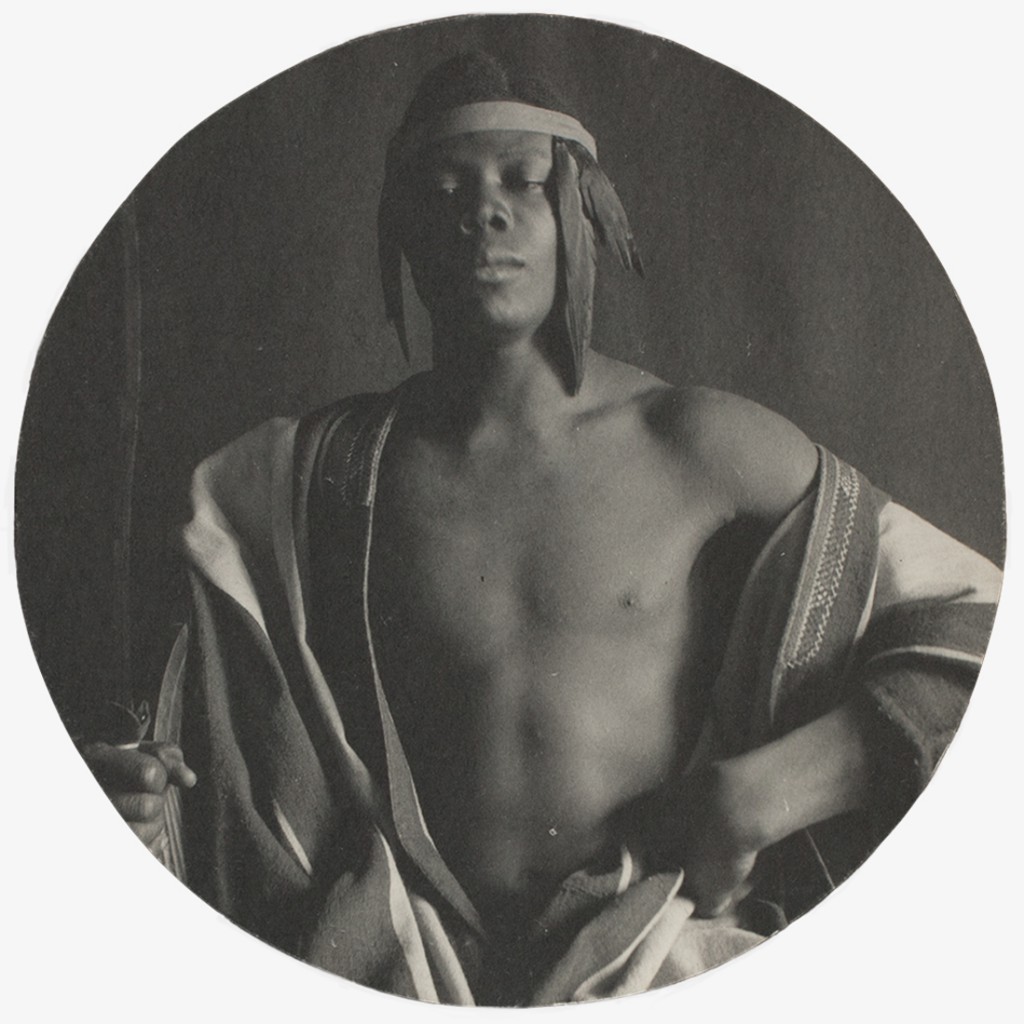A photographic process developed by British scientist William Willis Jr. in 1873. To create a platinum print (also known as a platinotype), a negative is placed in contact with photographic paper that has been sensitized with a solution of iron and platinum salts. After exposure, while the paper is submerged in the developer, the salts react to produce platinum metal in the exposed areas. The iron salts are then removed from the print in a clearing bath. Platinum prints have a velvety, matte appearance. The process was widely used between 1880 and 1916. Web resource here.
 F. Holland Day. Ethiopian Monarch. Platinum print. 1897. Printed ca. 1902. Alfred Stieglitz Collection, Art Insititute of Chicago.
F. Holland Day. Ethiopian Monarch. Platinum print. 1897. Printed ca. 1902. Alfred Stieglitz Collection, Art Insititute of Chicago.